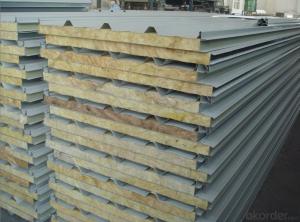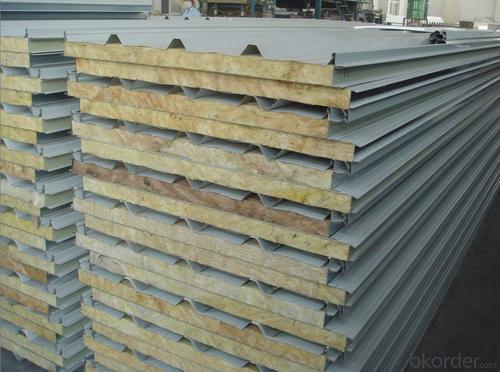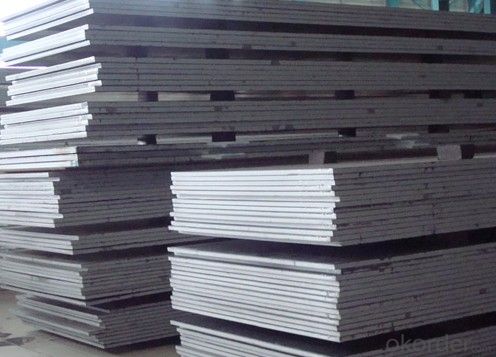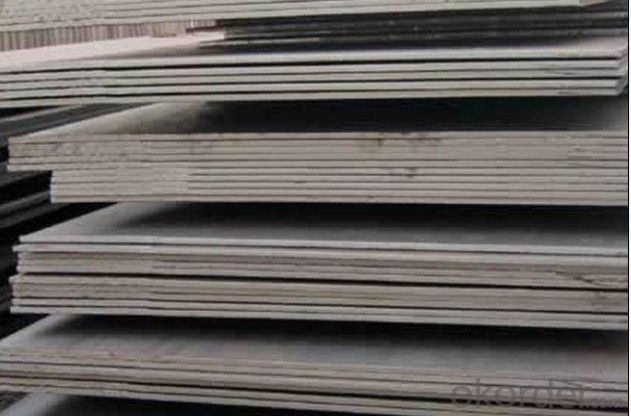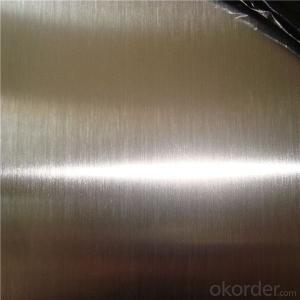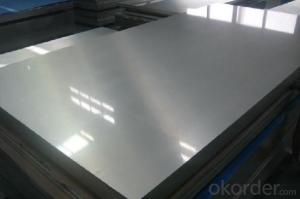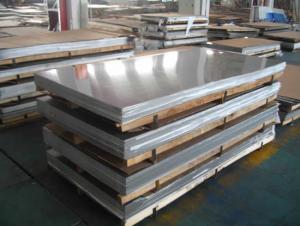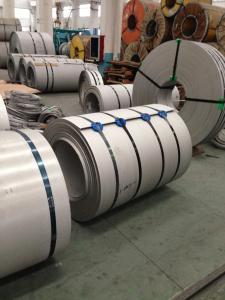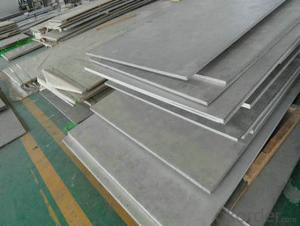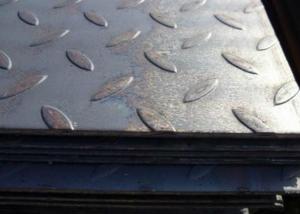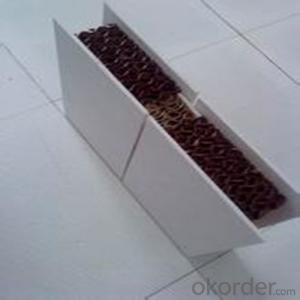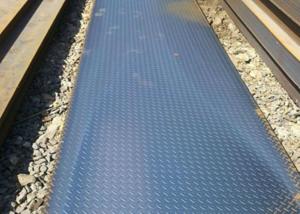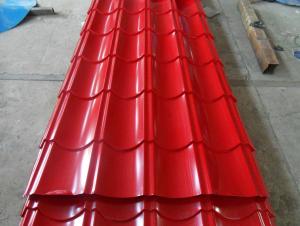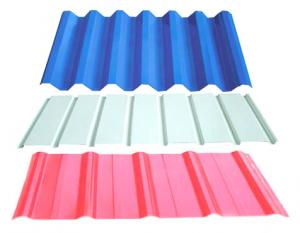Steel Q550 CDF Plate High Strength
- Loading Port:
- Qingdao
- Payment Terms:
- TT OR LC
- Min Order Qty:
- 2000 PCS
- Supply Capability:
- 38000 PCS/month
OKorder Service Pledge
OKorder Financial Service
You Might Also Like
Steel Q550 CDF Plate High Strength Details
| Standard: | GB | Grade: | q550 | Thickness: | 50 |
| Place of Origin: | China (Mainland) | Brand Name: | CNBM | payment: | TT |
| Type: | Steel Plate,hot rolled | Technique: | Hot Rolled | Surface Treatment: | Coated |
| Application: | Ship Plate | Special Use: | High-strength Steel Plate | Width: | 1500 |
| Length: | 8500 | material: | q550 |
Packaging & Delivery
| Packaging Detail: | standard packing |
| Delivery Detail: | 15 days |
Steel Q550 CDF Plate High Advantage
1.Professional manufacture with more than 50 years history
2. Lower price with best quality
3.Short delivery time
Steel Q550 CDF Plate Specification
Name | Q550 |
Standard | ASTM , GB ,DIN ,JIS ,EN ... |
Dimension | thickness : 5-200mm |
width: 1000-4000mm | |
length : 1000~12000mm or as request | |
Application | It is widely used in Building Construction,Bridge, ,Vehicles Components, hipping,High pressure container,Boiler,Large Structure steel etc |
Technique | Hot-rolled, controlled rolling, normalizing or as required |
Surface | HIC, SSC, SPWHT, as required |
Certification | Mill Test Certificate with shipment |
payment | T/T , L/C, West union and Other |
Delivery time | 7-15 days after your deposit and depend on quantity |
Package | standard sea packing or as request |
Steel Q550 CDF Plate Pictures
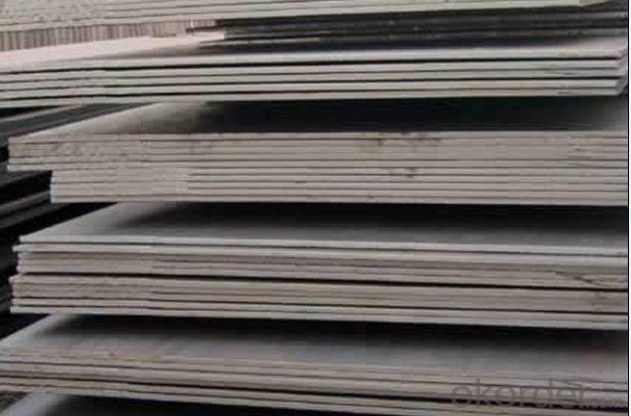
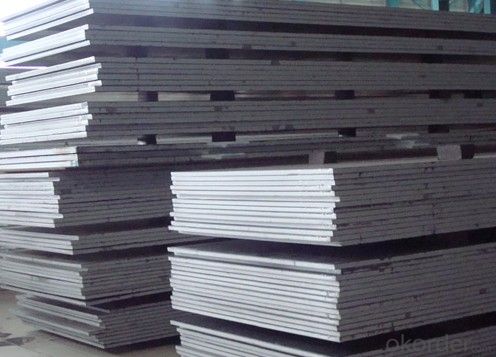
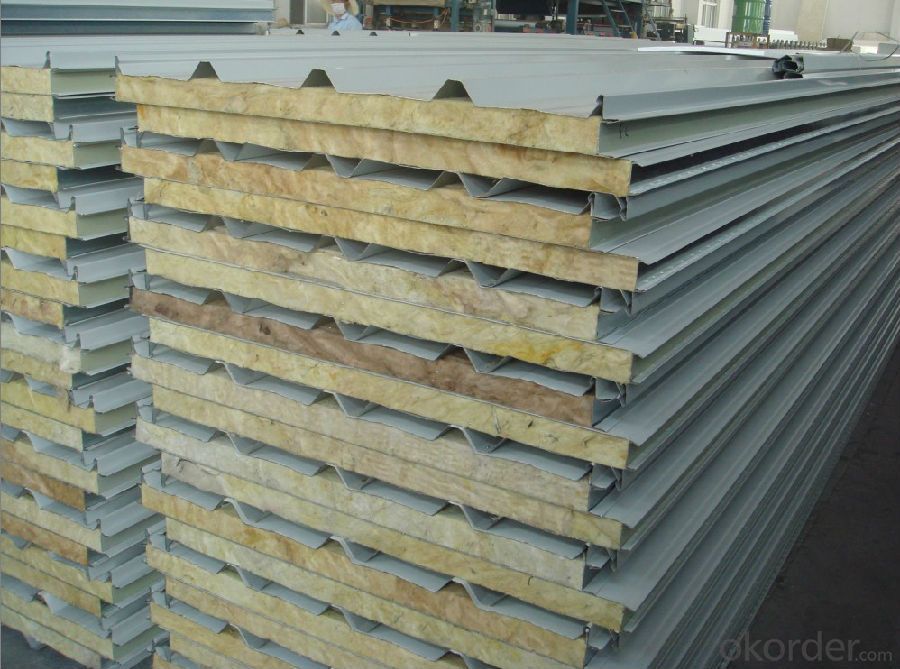
- Q: Are steel sheets suitable for roofing systems?
- Yes, steel sheets are suitable for roofing systems. They are durable, long-lasting, and resistant to various weather conditions, making them an ideal choice for protecting buildings from the elements. Additionally, steel sheets are lightweight, easy to install, and require minimal maintenance, making them a cost-effective option for roofing systems.
- Q: Can the steel sheets be used for insulation purposes?
- No, steel sheets are not typically used for insulation purposes as they conduct heat and cold rather than providing insulation.
- Q: Are steel sheets suitable for decorative applications?
- Yes, steel sheets are suitable for decorative applications. Steel sheets can be used in various decorative applications due to their versatility, durability, and aesthetic appeal. They can be easily manipulated into different shapes, sizes, and patterns, making them suitable for a wide range of decorative purposes. Steel sheets can be used to create decorative wall panels, room dividers, ceiling tiles, and facades. They can also be used for decorative accents such as trims, moldings, and decorative screens. The smooth and reflective surface of steel sheets adds a modern and elegant touch to any space. Additionally, steel sheets can be coated or treated with various finishes and coatings to enhance their decorative properties. These finishes can include paint, powder coating, patina, or even specialized coatings like faux rust or metallic finishes. These options allow for a wide range of design possibilities, enabling steel sheets to complement any interior or exterior décor style. Moreover, steel sheets are highly durable and long-lasting, making them suitable for both indoor and outdoor decorative applications. They are resistant to corrosion, fire, and extreme weather conditions, ensuring that the decorative elements made from steel sheets maintain their appearance and functionality over time. In summary, steel sheets are indeed suitable for decorative applications. Their versatility, durability, and aesthetic appeal make them an excellent choice for creating visually appealing and long-lasting decorative elements in various settings.
- Q: What are the different forms of steel sheets (flat, perforated, expanded, etc.)?
- There are various forms of steel sheets available to meet different applications and requirements. Some of the options include the following: 1. Flat Steel Sheets: With a smooth and flat surface, these sheets find common use in the construction, fabrication, and manufacturing industries. They are versatile, allowing for easy cutting, shaping, and forming into different products. 2. Perforated Steel Sheets: These sheets feature evenly spaced small holes or perforations. They are commonly used for filtration, ventilation, and decorative purposes. Perforated steel sheets provide excellent airflow and visibility while maintaining their structural integrity. 3. Expanded Steel Sheets: These sheets are created by cutting and stretching a flat steel sheet, resulting in a mesh-like pattern. They offer lightweight, sturdy construction and excellent ventilation and drainage. They are often used in applications such as walkways, gratings, fencing, and security. 4. Galvanized Steel Sheets: These sheets are coated with a layer of zinc, which provides exceptional corrosion resistance. Galvanized steel sheets are suitable for outdoor applications where exposure to moisture and harsh weather conditions is a concern. 5. Stainless Steel Sheets: Made from an alloy of steel and chromium, these sheets offer excellent corrosion resistance and high tensile strength. They find common use in the food industry, transportation, medical equipment, and architectural applications. 6. Cold Rolled Steel Sheets: These sheets are produced by rolling steel at room temperature, resulting in a smooth and even surface. Cold-rolled steel sheets offer improved surface finish, dimensional accuracy, and strength. They are commonly used in the automotive, appliances, and furniture industries. 7. Hot Rolled Steel Sheets: These sheets are produced by heating steel above its recrystallization temperature and then rolling it. Hot-rolled steel sheets have a rougher surface and are more malleable compared to cold-rolled sheets. They are commonly used in structural components, construction, and general fabrication. These examples represent just a fraction of the available forms of steel sheets. Each type possesses unique properties and advantages that make them suitable for various applications and industries.
- Q: Can steel sheets be used for HVAC equipment?
- Yes, steel sheets can be used for HVAC equipment. Steel sheets are commonly used in the construction of HVAC components such as ductwork, air handling units, and heat exchangers, due to their durability, strength, and ability to withstand high temperatures.
- Q: Why should the back of the steel sheet pile cofferdam be pumped after the construction of the pile cap?
- According to the construction schedule or on-site organization of steel sheet pile of entry, to ensure the construction of steel sheet pile to meet the schedule requirements, stacking position of steel sheet pile according to the construction requirements and site conditions along the support line dispersed stacked, stacked together to avoid concentration caused by the two handling.
- Q: What is the weight of a typical steel sheet?
- The weight of a typical steel sheet can vary depending on its dimensions and thickness. However, on average, a standard steel sheet can weigh anywhere from 15 to 30 pounds per square foot.
- Q: What are the different types of steel sheet finishes for marine applications?
- There are several different types of steel sheet finishes that are commonly used for marine applications. These finishes are specifically designed to enhance the durability and corrosion resistance of steel sheets in marine environments, where they are constantly exposed to moisture, saltwater, and harsh weather conditions. 1. Hot-dip galvanized: This is one of the most common finishes for marine applications. The steel sheet is coated with a layer of zinc through a hot-dip process, which provides excellent corrosion protection. The zinc layer acts as a sacrificial barrier, preventing the underlying steel from rusting. 2. Stainless steel: Stainless steel sheets are highly resistant to corrosion and are commonly used in marine applications. The sheets are made from an alloy of steel, chromium, and nickel, which provides high strength and excellent corrosion resistance. Stainless steel sheets are available in different grades, with 316 stainless steel being the most commonly used in marine environments. 3. Powder coating: Powder coating is a popular finish for steel sheets used in marine applications. A layer of powdered polymer is electrostatically applied to the steel sheet and then cured under heat, creating a hard and durable coating. Powder coating provides good corrosion resistance and can be customized in various colors and textures. 4. Epoxy coating: Epoxy coatings are often applied to steel sheets in marine environments to provide superior protection against corrosion. These coatings are chemically resistant and provide excellent adhesion to the steel surface. Epoxy coatings are also known for their high impact and abrasion resistance. 5. Organic coating: Organic coatings, such as polyurethane or acrylic coatings, are used to protect steel sheets in marine applications. These coatings provide a protective barrier against corrosion and are commonly used in offshore structures, ships, and other marine equipment. It's important to note that the choice of steel sheet finish for marine applications depends on various factors, including the specific environmental conditions, budget, and desired aesthetics. Consulting with a professional or referring to industry standards and recommendations can help determine the most suitable finish for a particular marine application.
- Q: Are steel sheets suitable for automotive exhaust systems?
- Yes, steel sheets are suitable for automotive exhaust systems. Steel is a commonly used material in the manufacturing of exhaust systems due to its durability, strength, and resistance to high temperatures and corrosion. Automotive exhaust systems are subjected to extreme heat and corrosive gases, and steel sheets are able to withstand these conditions effectively. Additionally, steel sheets can be easily formed and welded, making them suitable for the complex shapes and configurations required in exhaust system components. Overall, steel sheets provide the necessary properties and characteristics required for automotive exhaust systems, making them a suitable choice for this application.
- Q: Are steel sheets suitable for chemical storage tanks?
- Yes, steel sheets are suitable for chemical storage tanks. Steel is a highly durable and strong material that can withstand the corrosive nature of many chemicals. Additionally, steel sheets can be coated with protective layers or linings to further enhance their resistance to chemicals, making them a reliable choice for chemical storage tanks.
Send your message to us
Steel Q550 CDF Plate High Strength
- Loading Port:
- Qingdao
- Payment Terms:
- TT OR LC
- Min Order Qty:
- 2000 PCS
- Supply Capability:
- 38000 PCS/month
OKorder Service Pledge
OKorder Financial Service
Similar products
Hot products
Hot Searches
Related keywords
